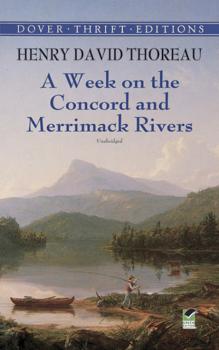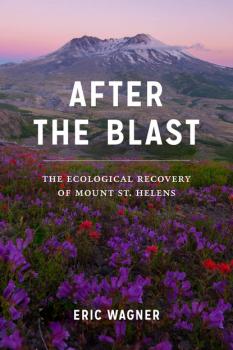Биология
Различные книги в жанре БиологияThe Forest in Folklore and Mythology
"If you have a feeling for the mystery and enchantment of the woods, you will want to own this book." — Outlook.Assembled from an enormous range of sources, this fascinating book is a mind-expanding compendium of facts, folklore, superstitions, myths, and anecdotes about trees and the forest. Included are descriptions of old forests; forest customs, temples and sacred groves; mythical forest creatures such as witches, fairies, demons, wood spirits, the «wild huntsman,» and wood nymphs.The author also recounts facts and fables about individual trees, including famous trees throughout the world, unusual trees, tree worship, people's transformation into trees, and disposal of the dead in trees — as well as folklore about fossil trees, tree bark, leaves, thorns, diving rods, and Yule logs.This long-unavailable treasury of legend and lore will be welcomed by naturalists, anthropologists, students of folklore, and general readers alike. «A work which the curious will love to consult … a book which should be in every upper school library, and at the hand of every one to whom reference to such things is important.» — Saturday Review.
A Week on the Concord and Merrimack Rivers
Based on an 1839 boat trip Thoreau took with his brother from Concord, Massachusetts, to Concord, New Hampshire, and back, this classic of American literature is not only a vivid narrative of that journey, it is also a collection of thought-provoking observations on such diverse topics as poetry, literature, and philosophy, Native American and Puritan histories of New England, friendship, sacred Eastern writings, traditional Christianity, and much more.Written, like Walden, while Thoreau lived at Walden Pond, and published in 1849, A Week (his first book) shares many themes with Walden, published in 1854. Both dramatize the process of self-renewal in nature and resolutely rail against the official culture and politics of the «trivial Nineteenth Century.» Blending keen observation with a wealth of perceptive and informed reflections, Thoreau develops a continuous and lyrical dialogue between the past and present, as particular scenes on shore trigger reflections on the region's history and legends. Originally conceived as a travel book, A Week eventually became much more — one of the most intellectually ambitious works of 19th-century America, and a requiem for Thoreau's brother John, who died from a sudden illness in 1842.Of Thoreau and this work, Ralph Waldo Emerson said, «H. D. Thoreau is a great man in Concord, a man of original genius and character. I think it is a book of wonderful merit, which is to go far and last long.»
On the Origin of Species
"The Origin is one of the most important books ever published, and a knowledge of it should be a part of the intellectual equipment of every educated person. . . . The book will endure in future ages so long as a knowledge of science persists among mankind." — NatureIt took Charles Darwin more than twenty years to publish this book, in part because he realized that it would ignite a firestorm of controversy. On the Origin of Species first appeared in 1859, and it remains a continuing source of conflict to this day. Even among those who reject its ideas, however, the work's impact is undeniable. In science, philosophy, and theology, this is a book that changed the world.In addition to its status as the focus of a dramatic turning point in scientific thought, On the Origin of Species stands as a remarkably readable study. Carefully reasoned and well-documented in its arguments, the work offers coherent views of natural selection, adaptation, the struggle for existence, survival of the fittest, and other concepts that form the foundation of modern evolutionary theory. This volume is a reprint of the critically acclaimed first edition.
After the Blast
On May 18, 1980, people all over the world watched with awe and horror as Mount St. Helens erupted. Fifty-seven people were killed and hundreds of square miles of what had been lush forests and wild rivers were to all appearances destroyed.Ecologists thought they would have to wait years, or even decades, for life to return to the mountain, but when forest scientist Jerry Franklin helicoptered into the blast area a couple of weeks after the eruption, he found small plants bursting through the ash and animals skittering over the ground. Stunned, he realized he and his colleagues had been thinking of the volcano in completely the wrong way. Rather than being a dead zone, the mountain was very much alive.Mount St. Helens has been surprising ecologists ever since, and in After the Blast Eric Wagner takes readers on a fascinating journey through the blast area and beyond. From fireweed to elk, the plants and animals Franklin saw would not just change how ecologists approached the eruption and its landscape, but also prompt them to think in new ways about how life responds in the face of seemingly total devastation.
Fire
Over vast expanses of time, fire and humanity have interacted to expand the domain of each, transforming the earth and what it means to be human. In this concise yet wide-ranging book, Stephen J. Pyne—named by Science magazine as “the world’s leading authority on the history of fire”—explores the surprising dynamics of fire before humans, fire and human origins, aboriginal economies of hunting and foraging, agricultural and pastoral uses of fire, fire ceremonies, fire as an idea and a technology, and industrial fire.In this revised and expanded edition, Pyne looks to the future of fire as a constant, defining presence on Earth. A new chapter explores the importance of fire in the twenty-first century, with special attention to its role in the Anthropocene, or what he posits might equally be called the Pyrocene.
The Snow Leopard and the Goat
Following the downgrading of the snow leopard’s status from “endangered” to “vulnerable” by the International Union for Conservation of Nature in 2017, debate has renewed about the actual number of snow leopards in the wild and the most effective strategies for coexisting with these enigmatic animals. Evidence from Pakistan and other countries in the snow leopard’s home range shows that they rely heavily on human society—domestic livestock accounts for as much as 70 percent of their diet. Maintaining that the snow leopard is a “wild” animal, conservation NGOs and state agencies have enacted laws that punish farmers for attacking these predators, while avoiding engaging with efforts to mitigate the harms suffered by farmers whose herds are reduced by snow leopards.This ethnography examines the uneven distribution of costs and benefits involved in snow leopard conservation and shows that for the conservation of nature to be successful, the vision, interests, and priorities of those most affected by conservation policies—in this case, local farmers—must be addressed. A case history of Project Snow Leopard in the mountains of northern Pakistan, which inspired similar programs in India, Bhutan, Nepal, Mongolia, Afghanistan and Tajikistan, describes how the animal’s food habits are studied, how elusive individuals are counted, and how a novel kind of “snow leopard insurance” has protected the species by compensating farmers for livestock losses. The Snow Leopard and the Goat demonstrates that characterizing this conflict as one between humans (farmers) and wildlife (snow leopards) is misleading, as the real conflict is between two human groups—farmers and conservationists—who see the snow leopard differently.
Working with the Ancestors
Throughout the Marquesas Islands of French Polynesia, forest spirits share space with ancestral ruins and active agricultural plots, affecting land use and heritage preservation. As their efforts to establish UNESCO World Heritage status continue, Marquesans grapple with questions about when sites should be preserved intact, when neglect is an appropriate option, and when deterioration resulting from local livelihoods should be accepted.In Working with the Ancestors Emily Donaldson considers how Marquesan perceptions of heritage and mana , or sacred power, have influenced the use of land in the islands and how both cultural and environmental sustainability can be achieved. The Marquesas’ relative geographical isolation and ecological richness are the backdrop for the confluence of international heritage preservation and sustainability efforts that affect both resources and Indigenous peoples. Donaldson demonstrates how anthropological concepts of embodiment, alienation, place, and power can inform global resource management, offering a new approach that integrates analyses of policy, practice, and heritage.
Living with Oil and Coal
The nineteenth-century discovery of oil in the eastern Himalayan foothills, together with the establishment of tea plantations and other extractive industries, continues to have a profound impact on life in the region. In the Indian states of Assam and Nagaland, everyday militarization, violence, and the scramble for natural resources regulate the lives of Naga, Ahom, and Adivasi people, as well as migrants from elsewhere in the region, as they struggle to find peace and work.Anthropologist Dolly Kikon uses in-depth ethnographic accounts to address the complexity of Northeast India, a region between Southeast Asia and China where boundaries and borders are made, disputed, and maintained. Bringing a fresh and exciting direction to borderland studies, she explores the social bonds established through practices of resource extraction and the tensions these relations generate, focusing on peoples’ love for the landscape and for the state, as well as for family, friends, and neighbors. Living with Oil and Coal illuminates questions of citizenship, social justice, and environmental politics that are shared by communities worldwide.
Footbinding as Fashion
Previous studies of the practice of footbinding in imperial China have theorized that it expressed ethnic identity or that it served an economic function.�By analyzing the popularity of footbinding in different places and times, Footbinding as Fashion�investigates the claim that early Qing (1644�1911) attempts by Manchu rulers to ban footbinding made it a symbol of anti-Manchu sentiment and Han identity and led to the spread of the practice throughout all levels of society.�Detailed case studies of Taiwan, Hebei, and Liaoning provinces exploit rich bodies of previously neglected ethnographic reports, economic surveys, and rare censuses of footbinding to challenge the significance of sedentary female labor and ethnic rivalries as factors leading to the hegemony of the footbinding fashion.�The study concludes that, independently of identity politics and economic factors, variations in local status hierarchies and elite culture coupled with status competition and fear of ridicule for not binding girls� feet best explain how a culturally arbitrary fashion such as footbinding could attain hegemonic status.
Caring for Glaciers
Regional geopolitical processes have turned the Himalayan region of Ladakh, in northwest India, into a strategic border area with an increasing military presence that has decentered the traditional agropastoralist economy. This in turn has led to social fragmentation, the growing isolation of elders, and ethical dilemmas for those who strive to maintain traditional subsistence activities. Simultaneously, climate change is causing glaciers—a vital source of life in the region—to recede, which elders perceive as the consequence of a broken bond with the natural environment and the deities that inhabit the landscape. Caring for Glaciers looks at the causes and consequences of ongoing social and cultural change in peoples’ relationship with the natural environment. It illuminates how relations of reciprocity – learned through everyday life and work in the mountains with the animals, glaciers, and deities that form Ladakh’s sacred geography – shape and nurture an ethics of care. Integrating contemporary studies of affect, landscape, and multispecies anthropology, Caring for Glaciers contributes to the anthropology of ethics by examining the moral order that develops through the embodied experience of life and work in the Himalayas.









